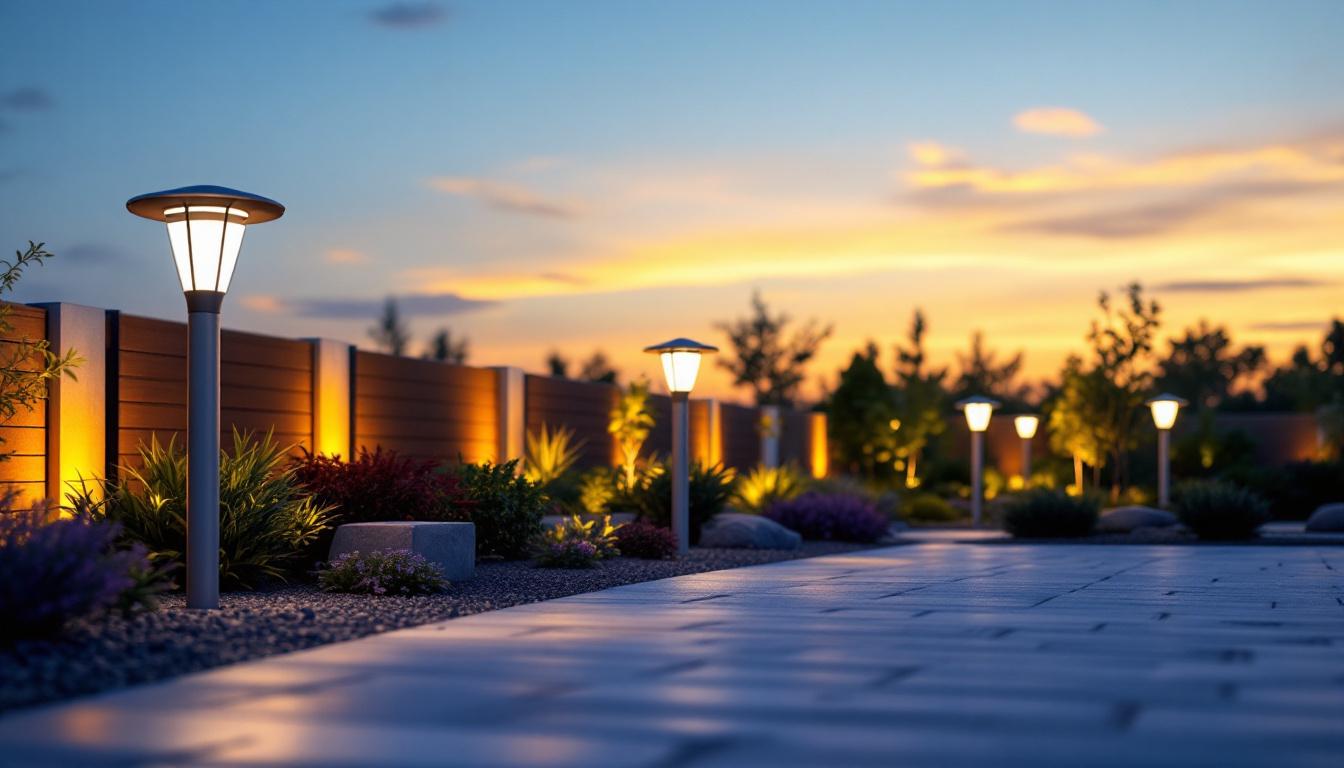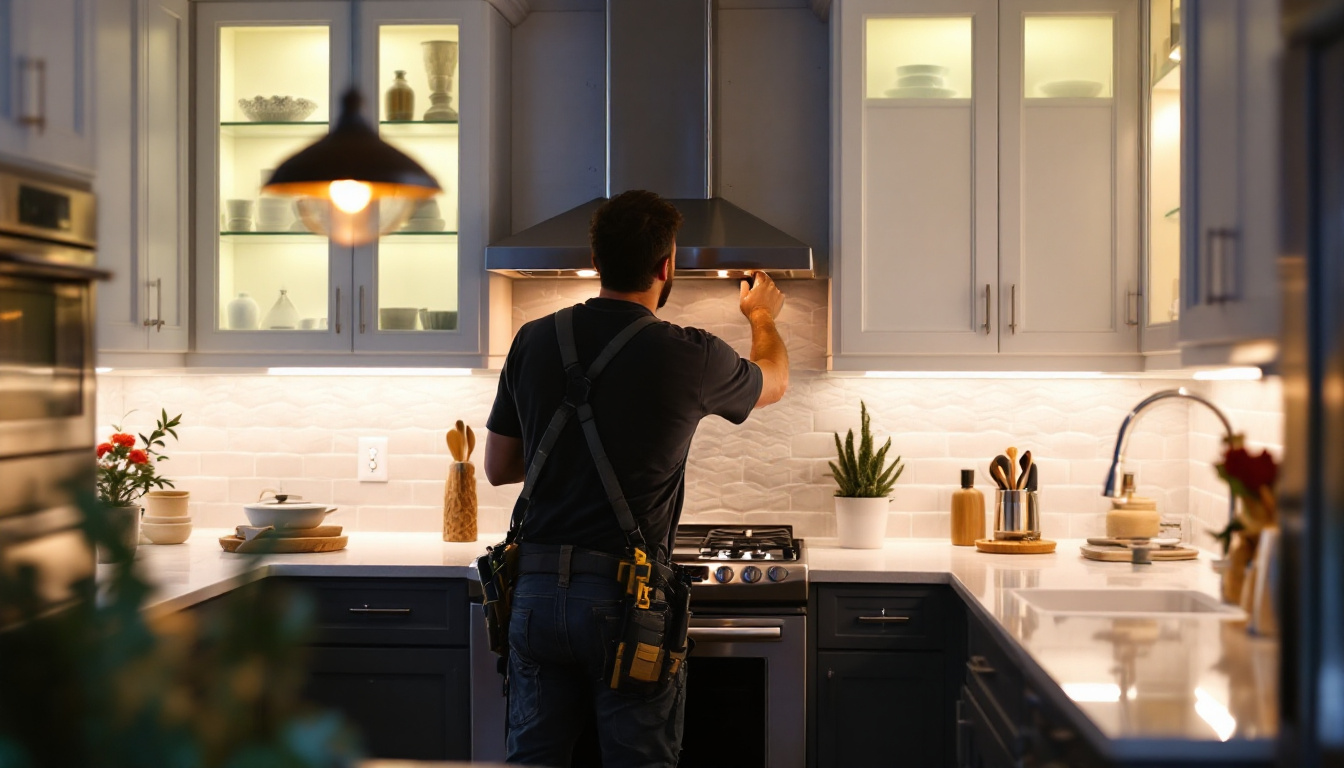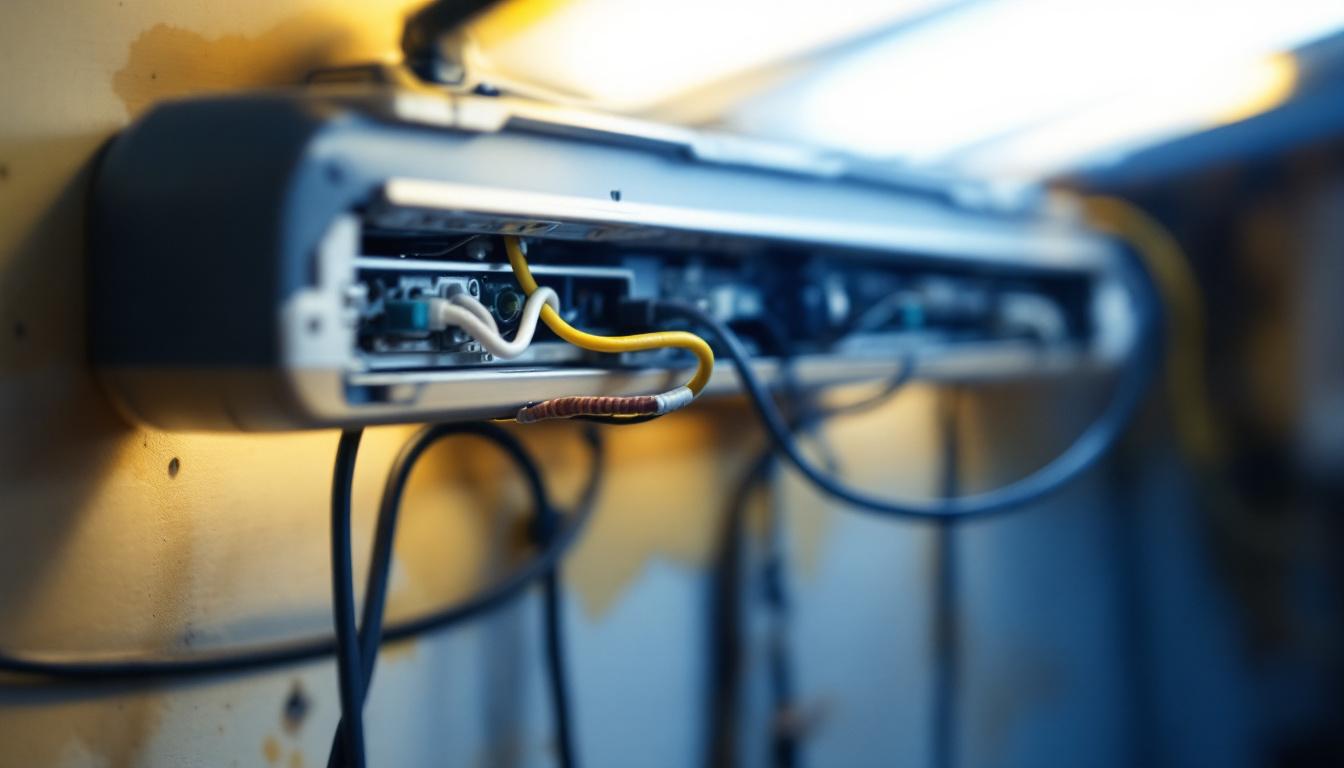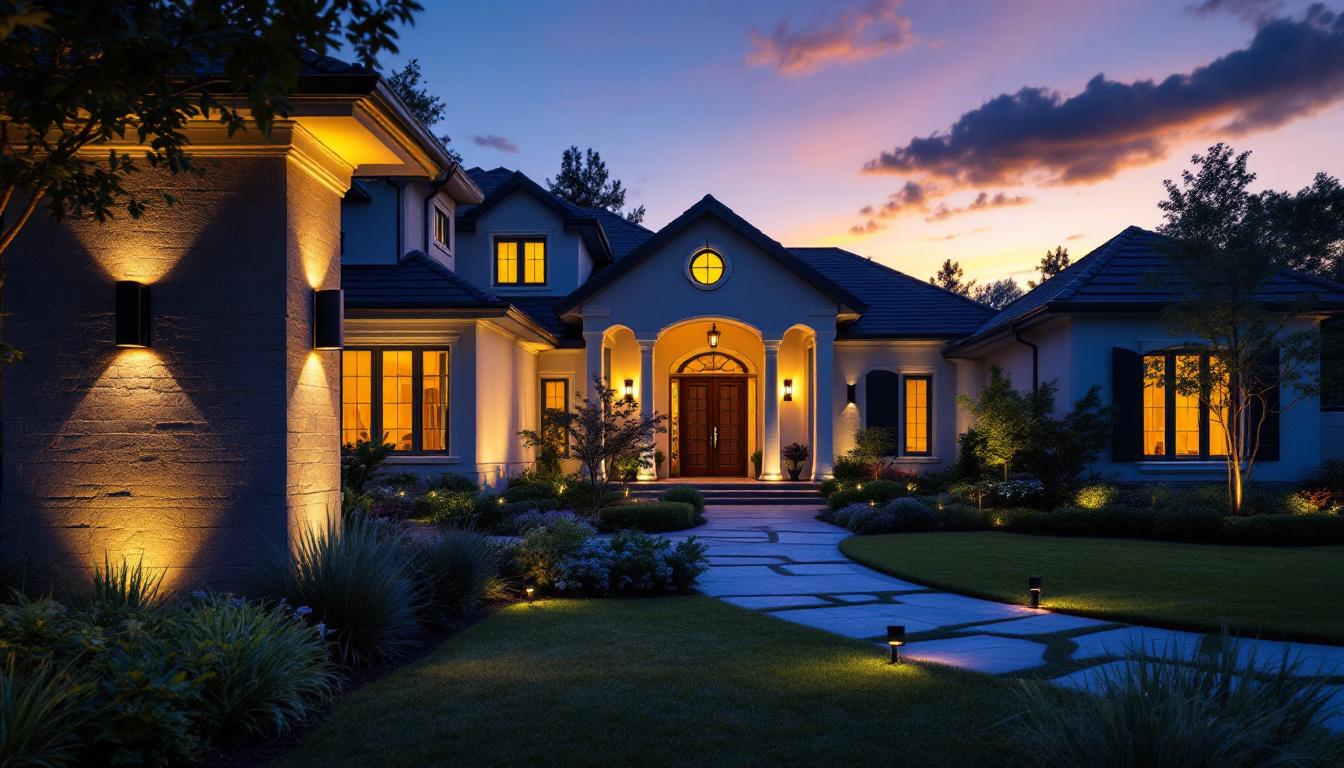
As outdoor spaces gain increasing importance in residential and commercial settings, the demand for effective lighting solutions has surged. Lighting contractors play a crucial role in designing and implementing outdoor lighting projects that not only enhance aesthetics but also ensure safety and functionality. Future-proofing these lighting projects is essential for accommodating evolving technologies and changing client needs. This article explores various strategies to achieve longevity and adaptability in outdoor area lighting.
Future-proofing outdoor lighting projects is not merely a trend; it is a necessity. As technology evolves, so do the expectations of clients and the requirements of outdoor spaces. By considering future advancements during the planning and installation phases, contractors can provide solutions that remain relevant and effective over time.
Moreover, outdoor lighting systems are often significant investments. Clients expect these systems to last and adapt to their changing needs. Future-proofing ensures that lighting installations can accommodate upgrades without requiring complete overhauls, thus saving time and resources in the long run.
One of the primary reasons to future-proof outdoor lighting is the rapid pace of technological advancements. Innovations such as smart lighting systems, energy-efficient LEDs, and automated controls are becoming increasingly popular. By incorporating these technologies into projects, contractors can offer clients a modern solution that enhances usability and energy efficiency.
For instance, smart lighting systems allow users to control their outdoor lights via mobile apps or voice commands. This not only adds convenience but also enables clients to adjust their lighting based on specific needs or preferences. By integrating such technologies into the initial design, contractors can ensure that the lighting systems remain relevant and functional as new features become available. Furthermore, the integration of sensors for motion detection and ambient light adjustment can significantly enhance energy savings, ensuring that lights are only active when needed, thus reducing electricity costs and environmental impact.
Design flexibility is another critical aspect of future-proofing outdoor lighting projects. As lifestyles and outdoor space usage evolve, the lighting design should be adaptable to accommodate these changes. This can involve selecting fixtures that can be easily relocated or adjusted, as well as implementing modular systems that allow for easy expansion or reconfiguration.
For example, using track lighting or adjustable fixtures can provide the necessary flexibility for clients who may want to change the layout of their outdoor spaces in the future. By prioritizing adaptable designs, contractors can ensure that their installations remain functional and appealing for years to come. Additionally, incorporating a variety of lighting styles—such as path lights, accent lights, and floodlights—can create a versatile atmosphere that can be tailored to different occasions, from intimate gatherings to larger celebrations. This versatility not only enhances the aesthetic appeal of the outdoor space but also allows for a dynamic environment that can evolve alongside the client’s lifestyle and preferences.
When embarking on outdoor lighting projects, several key considerations can help ensure that installations are future-proof. These considerations encompass technology, design, and sustainability, all of which play a vital role in creating lasting solutions.
Energy efficiency is a paramount concern in modern lighting design. Clients are increasingly aware of their carbon footprints and are looking for ways to reduce energy consumption. By utilizing energy-efficient LED fixtures and incorporating smart technology, contractors can help clients save on energy costs while also contributing to environmental sustainability.
Moreover, energy-efficient lighting solutions often come with longer lifespans, which can reduce maintenance costs and the frequency of replacements. This aspect not only benefits the client financially but also aligns with the growing demand for eco-friendly practices in all areas of construction and renovation.
Outdoor lighting fixtures must withstand various weather conditions, including rain, snow, and extreme temperatures. Selecting durable materials and ensuring proper installation techniques are essential for creating long-lasting lighting solutions. Contractors should consider fixtures that are rated for outdoor use and designed to resist corrosion, fading, and other environmental factors.
Additionally, incorporating protective features such as weatherproof enclosures or UV-resistant coatings can further enhance the durability of outdoor lighting installations. By prioritizing weather resistance, contractors can reduce the likelihood of future repairs or replacements, thus ensuring that the lighting remains functional and aesthetically pleasing over time.
The integration of smart technology into outdoor lighting projects is becoming increasingly essential. As clients seek more control and customization over their lighting systems, contractors must be prepared to offer solutions that incorporate these advancements.
Smart controls allow clients to manage their outdoor lighting systems remotely. This can include scheduling lights to turn on and off at specific times, adjusting brightness levels, and even changing colors. By incorporating these features, contractors can provide clients with a sense of security and convenience, as well as the ability to create different atmospheres for various occasions.
Automation can also enhance energy efficiency by ensuring that lights are only on when needed. For example, motion sensors can be integrated to activate lights when someone approaches, providing safety and security while minimizing energy waste. These features make outdoor lighting systems more adaptable and aligned with modern lifestyles.
When selecting smart technology for outdoor lighting, it is essential to choose systems that are compatible with future advancements. This includes ensuring that the chosen technology can integrate with other smart home devices and platforms. By opting for systems that support open standards and protocols, contractors can help clients avoid the pitfalls of proprietary systems that may become obsolete.
Additionally, providing clients with the option to upgrade their systems as new technologies emerge can further enhance the longevity and relevance of outdoor lighting installations. This approach not only benefits the client but also positions the contractor as a forward-thinking professional in the industry.
Outdoor lighting should not only be functional but also enhance the overall aesthetics of the space. Striking a balance between beauty and practicality is key to creating inviting outdoor environments. Contractors must consider various design elements to achieve this balance.
Layered lighting involves using different types of lighting to create depth and dimension in outdoor spaces. This can include ambient lighting for general illumination, task lighting for specific areas, and accent lighting to highlight architectural features or landscaping. By incorporating multiple layers of light, contractors can create a visually appealing environment that is also functional.
Moreover, layered lighting can be adjusted based on the time of day or specific events, providing clients with versatile options for their outdoor spaces. This adaptability is essential for future-proofing, as it allows the lighting design to evolve with the client’s needs.
The selection of fixtures plays a significant role in both the aesthetics and functionality of outdoor lighting. Contractors should consider the architectural style of the property, the intended use of the outdoor space, and the overall design theme when choosing fixtures. This careful consideration ensures that the lighting complements the environment while also meeting practical requirements.
Moreover, opting for fixtures that can accommodate different bulb types or styles can enhance future adaptability. For instance, selecting fixtures that can support both traditional incandescent bulbs and modern LED options allows for easy upgrades as technology advances.
Educating clients about the benefits of future-proofing their outdoor lighting projects is crucial. By engaging clients in the planning process and explaining the long-term advantages of various design choices, contractors can foster a collaborative relationship that leads to more successful outcomes.
During initial consultations, contractors should take the time to discuss various options with clients, highlighting the benefits of energy-efficient solutions, smart technology, and durable materials. Providing clients with a clear understanding of how these choices can impact their lighting systems’ longevity and functionality can help them make informed decisions.
Additionally, showcasing examples of past projects that successfully incorporated future-proofing strategies can help clients visualize the potential benefits. This approach not only builds trust but also positions the contractor as an expert in the field.
Offering ongoing maintenance and support can further enhance the client experience and ensure that outdoor lighting systems remain functional and effective over time. Contractors should consider providing service agreements that cover regular inspections, updates, and repairs as needed.
By establishing a long-term relationship with clients, contractors can ensure that their outdoor lighting projects continue to meet evolving needs and expectations. This commitment to service not only benefits the client but also enhances the contractor’s reputation and fosters repeat business.
Future-proofing outdoor lighting projects is a vital consideration for lighting contractors aiming to deliver lasting and adaptable solutions. By understanding the importance of technological advancements, design flexibility, energy efficiency, and client engagement, contractors can create outdoor lighting systems that not only meet current needs but also accommodate future changes.
Incorporating smart technology, layered lighting designs, and durable materials ensures that outdoor lighting installations remain functional, aesthetically pleasing, and environmentally friendly. By prioritizing these strategies, contractors can position themselves as leaders in the industry, providing clients with exceptional value and innovative solutions for their outdoor spaces.
Ultimately, future-proofing is not just about keeping pace with change; it is about anticipating the needs of clients and the evolving landscape of outdoor lighting. By embracing this mindset, contractors can create lighting projects that stand the test of time, enhancing the beauty and functionality of outdoor spaces for years to come.
Ready to elevate your outdoor lighting projects with the latest in technology and design? At LumenWholesale, we provide lighting contractors with the tools to not only meet today’s standards but to stay ahead of the curve. Our spec-grade lighting products are crafted to ensure your installations are future-proof, energy-efficient, and stunningly beautiful. With unbeatable wholesale prices and the convenience of free shipping on bulk orders, you can trust LumenWholesale to light up your projects with quality and affordability. Don’t let middleman markups dim your vision. Discover Wholesale Lighting at the Best Value today and brighten the path to tomorrow’s success.

Discover essential tips and best practices for lighting contractors to master in-cabinet lighting installations.

Discover the crucial role of ballast in fluorescent light fixtures and why it’s often the overlooked component in lighting projects.

Discover the top pitfalls lighting contractors face when installing nautical lamp posts.

Discover essential exterior residential lighting tips contractors often overlook.